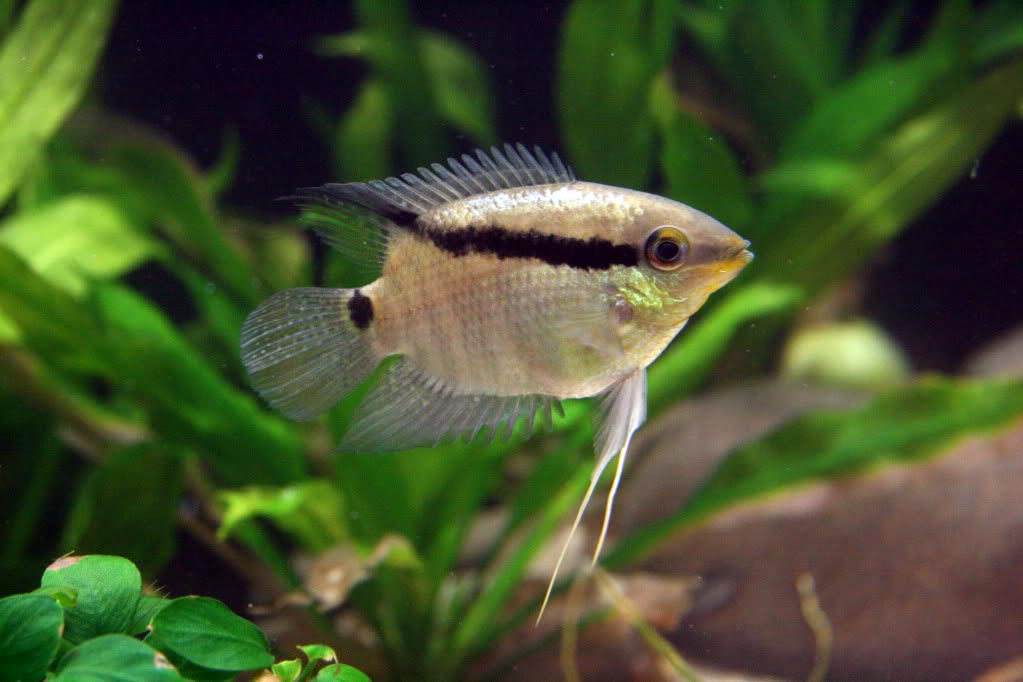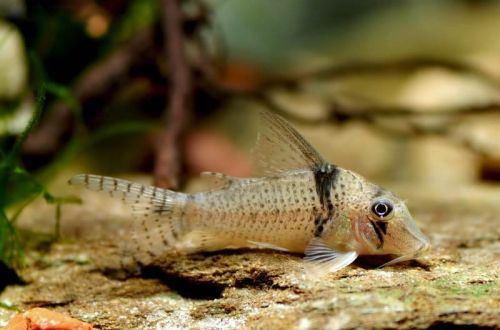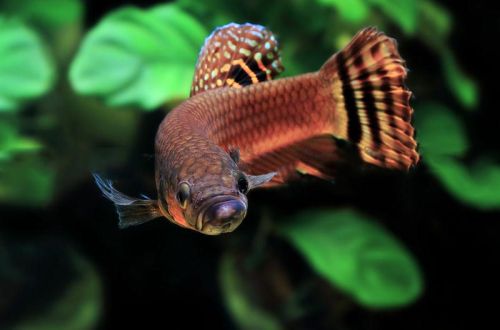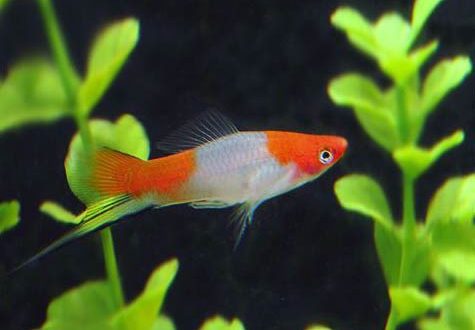
Cichlazoma of mesonauts
Mesonaut cichlazoma or Festivum, scientific name Mesonauta festivus, belongs to the Cichlidae family. A good choice for the beginner aquarist. Easy to keep and breed, distinguished by endurance and unpretentiousness. Able to get along with representatives of other species of fish.

Contents
Habitat
Widespread throughout much of South America. They are found in reservoirs and river systems of Brazil, Paraguay, Peru and Bolivia. Prefer regions with clean water, slow flow and rich aquatic vegetation.
Brief information:
- The volume of the aquarium – from 120 liters.
- Temperature – 22-28°C
- Value pH — 5.5–7.2
- Water hardness – soft (5-12 dGH)
- Substrate type – sand / gravel
- Lighting – moderate
- Brackish water – no
- Water movement – light or moderate
- The size of the fish is about 20 cm.
- Meals – any
- Temperament – peaceful
- Content alone, in pairs or in a group
- Lifespan up to 10 years
Description

Adults reach a length of up to 20 cm, although their wild relatives barely grow up to 15 cm. Sexual dimorphism is weakly expressed, it is problematic to distinguish males from females. This species is a close relative of the scalar, which is reflected in the appearance. The fish has an angular body shape strongly compressed from the sides. The anal and dorsal fins are pointed. A characteristic feature of the species is a black stripe running diagonally from the eyes to the back of the dorsal fin.
Color varies from silvery to yellow-brown. Coloring depends on the region of origin of a particular subspecies. It is worth noting that in aquariums there are already hybrid individuals.
Food
All types of dry, frozen and live foods will be accepted in the home aquarium. It is recommended to combine several types of products, for example, flakes or granules along with bloodworms, brine shrimp. An important condition is the use of herbal supplements. They can be already in dry food or added separately (spirulina, nori, etc.).
Maintenance and care, arrangement of the aquarium
The optimal size of the aquarium for one pair of fish starts from 120-150 liters. The design uses a substrate of fine gravel mixed with stones, a few snags, as well as floating or rooting plants. The latter land in clusters to leave free areas for swimming.
Festivum prefer weak or moderate water movement, medium light level. Good aeration and water filtration must be ensured. Fish are sensitive to the accumulation of organic waste and nitrogen compounds (products of the nitrogen cycle), so monitoring of water quality must be constant. When keeping, the mandatory procedures are: weekly replacement of part of the water (15–25% of the volume) with fresh water and regular cleaning of the soil.
Behavior and Compatibility
The mesonaut cichlazoma is characterized by calm behavior, compatible with many other non-aggressive species of comparable size. However, it poses a threat to very small fish such as neons, which can become their casual prey. Other large South American cichlids, such as Angelfish, Acara, Brazilian Geophagus, Severum, as well as some species of Gourami and catfish, will be good tankmates.
Breeding / breeding
As the fish mature, they form a permanent monogamous pair, which persists throughout their lives. How the fish choose their partner has not been studied. But one thing is known – adult fish grown in different aquariums rarely give offspring.
Thus, for breeding, you will either need to find a ready-made pair, or create the conditions for its occurrence. This means getting a dozen young fish from different broods and waiting for the male and female to find each other.
In favorable conditions, with the onset of the mating season, the female lays about 100 eggs, fixing them on the surface of a leaf or flat stone. The male releases a cloud of seed and fertilization occurs. In the wild, the fish prefer to nest on a submerged sugar cane stalk. Cichlazoma searches for a surface with a similar texture and in some cases even refuses to spawn if it cannot find it.
The parents protect the eggs and hatchlings until they are large enough. In order to protect offspring, spawning should preferably be carried out in a separate tank with identical water conditions as in a common aquarium.
Fish diseases
The cause of most diseases is inappropriate conditions of detention, which suppresses the immune system and makes the fish prone to disease. If the first symptoms or unusual behavior are detected, the first step is to check all the main water parameters and the concentration of nitrogen compounds (nitrogen cycle products). As a rule, the normalization of conditions favorably affects the well-being of the fish and their body copes with the disease itself. However, in advanced cases, this will not help and you will have to use medication. Read more about symptoms and treatments in the Aquarium Fish Diseases section.





